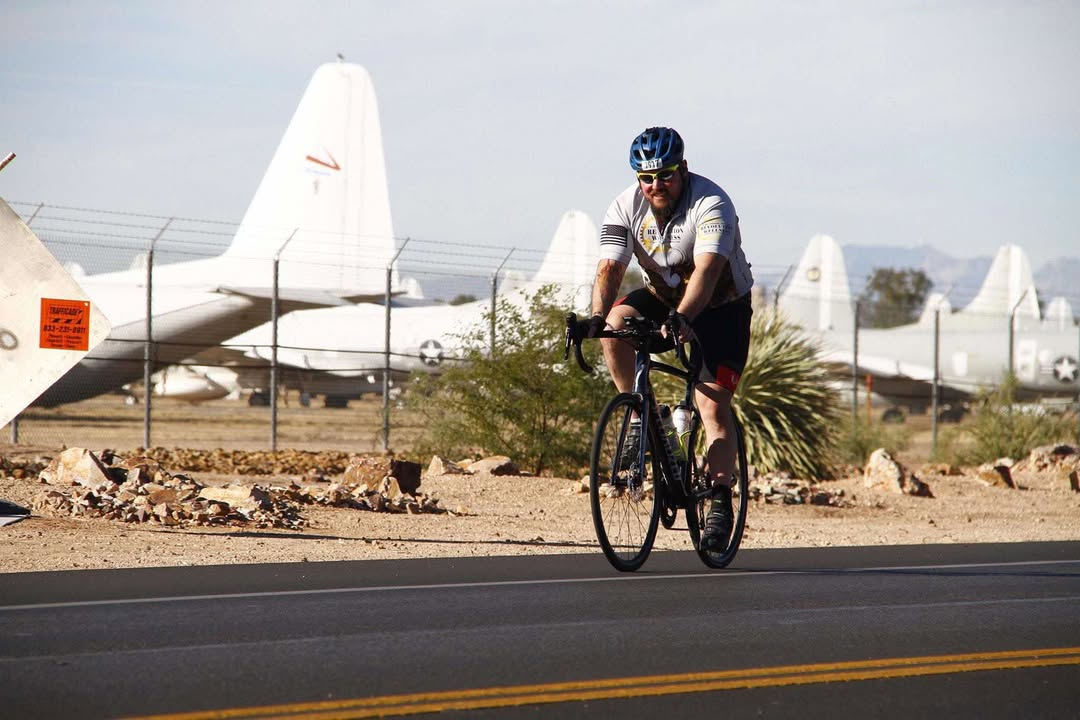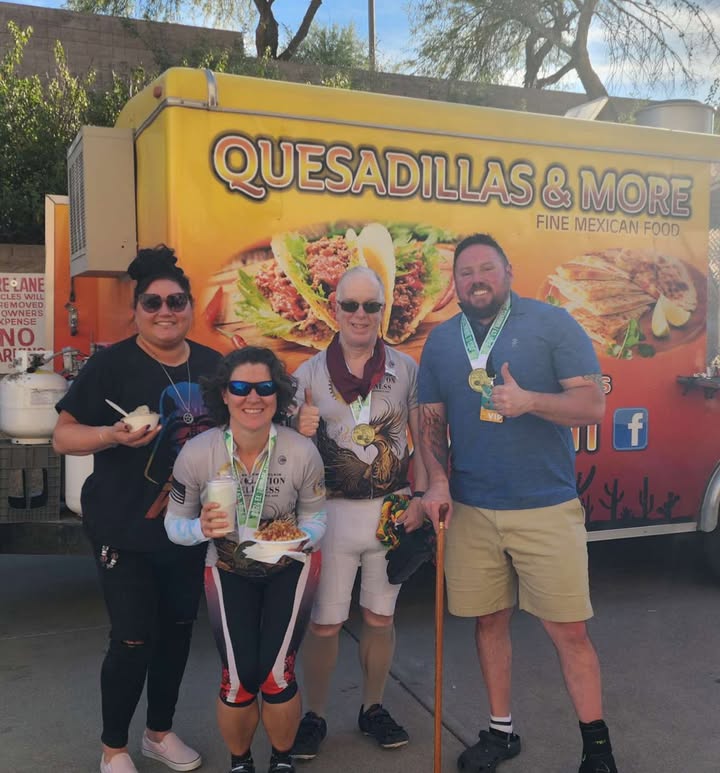Last year, the Salvation Army Tucson helped 24,229 people in need. It will continue to…
Blevins: ‘I can’t wait to get back on the bike in November’ for El Tour
Daniel Blevins’ note to El Tour was simple yet powerful – at least to us and to those we hope to help through the annual ride.
“As an adaptive athlete, and someone who struggles to move daily,” he wrote, “this event gives me something to really look forward to each year. I can’t wait to get back on the bike in November!”
And we can’t wait to see him there at the starting line on Nov. 22. He – and so many others –are the reason why El Tour and the nearly 100 non-profit partners ride in the biggest road cycling event in the country.
Blevins rode the 62-mile event in his first try in El Tour in 2024.

“I also cried a lot at the finish line because it felt amazing for a brief moment to feel the way I felt before the muscular disease got so bad,” he said.
But he finished – which is quite the accomplishment for the 41-year-old who is affected by Charcot-Marie-Tooth disease (CMT), a group of inherited disorders that cause nerve damage in the arms and legs in the nerves.
“Interestingly enough, I’ve only been able physically to compete in it one time,” he said, “but for five years, I used that as motivation to get on the bike and train for it.”

He started his quest to be in El Tour with the idea of “this is what I’m going to do to keep me moving, but every year my neuromuscular disease tends to get worse when the weather changes.”
Finally, in November of 2024, he was able to overcome so many things and join the other nearly 10,000 cyclists in the event.
It took everything he had to get on that bike and ride. He felt horribly, hobbling around the Tucson Convention Center before the ride.
“I couldn’t back out of it. I figured that if I didn’t do it now, I was never going to do it,” he said. “Then I’d never do anything physically. This was going to make or break me.”

He said to himself that if he could just get to the start line it would be okay.
“I thought if I could just do one or two miles that would be a victory,” he said. “I wasn’t able to move (much) and I was in pain. But I got on the bike and the energy (at the start) was so amazing, I stayed on the ride and was relatively fine for the 60-plus miles.”
He had done what he set out to do and he “celebrated.”
But, …. His body wasn’t working at all, he said.
Days later he had to be hospitalized.
“I knew that was coming,” he said.
It took him four weeks to recover, although saying it felt good “at the moment of the ride” but it was a nightmare after.
“But it was a nightmare well worth it,” he said.
Here’s the kicker. He’s a health and fitness coach and he often tells his clients to set their goals sustainably, not making big jumps that will set them back in their health and wellness.
“But sometimes, you have to go for it and lay it all on the line,” he said.
And that’s what he did.
So, he’ll be back – debating whether he’ll do the 62-miler again or take on the 102-mile ride.
Still, why even do it, given all the health issues?
“I want to live my life on my terms,” he said. “What I’ve found is there are a lot of people like me who, also despite their limitations, want to push themselves to want to do this (and events like it).”
Last year, he paid for a handful of adaptive athletes who wanted to get out there and ride.
“This has become a big part of me,” he said. “I never thought of myself as doing this, but I want to keep doing it. One, for myself to have the confidence to do it, not feeling like a failure and being able to do the things you want to do.
“And two, showing it can be done. Showing people that it’s possible despite the limitations you have. It could be life-changing for them. I’ve seen first-hand the power it is to transform people’s thoughts. It’s always been there (with them) but sometimes they just need an example.”
So, expect him and others – he’ll help – get at the 42nd El Tour in November.
